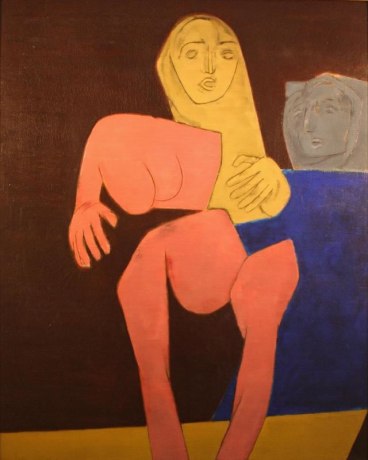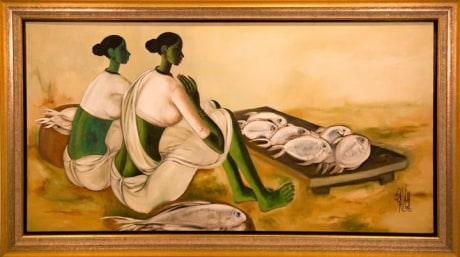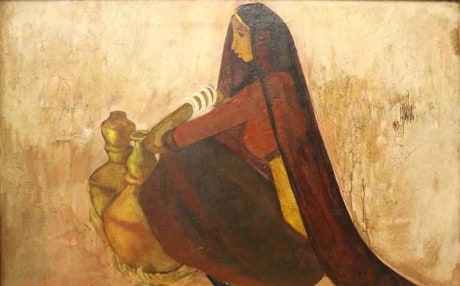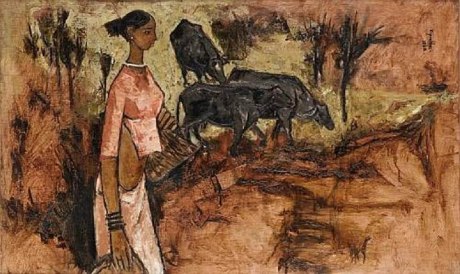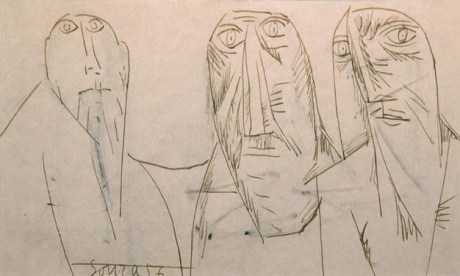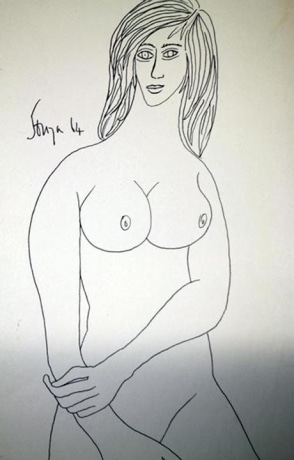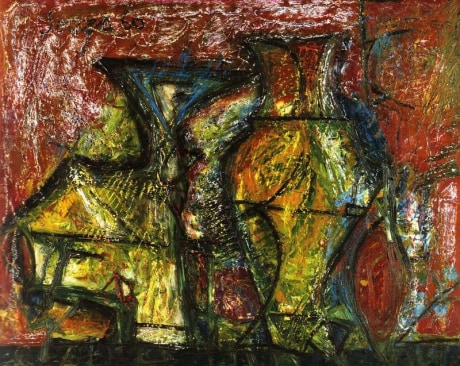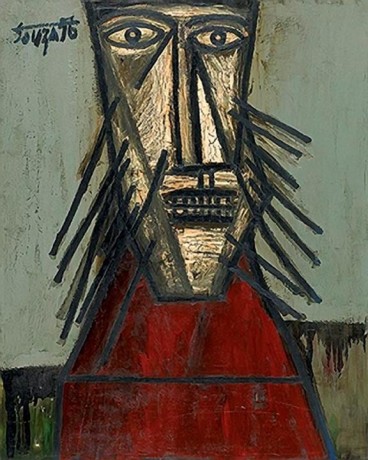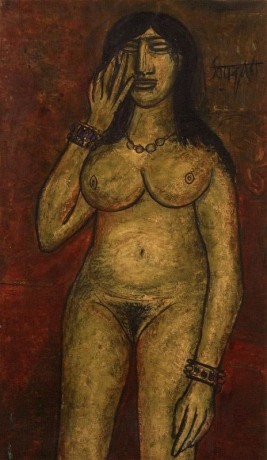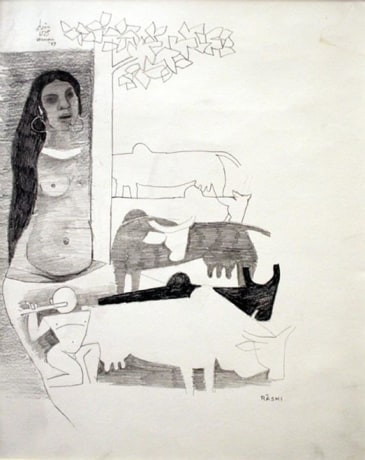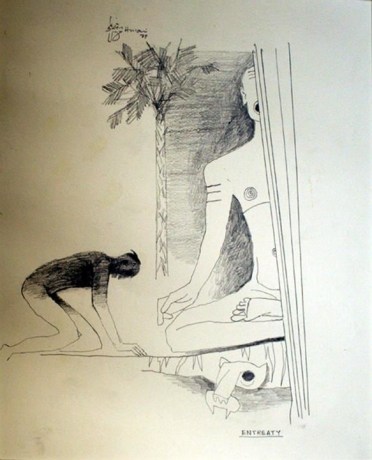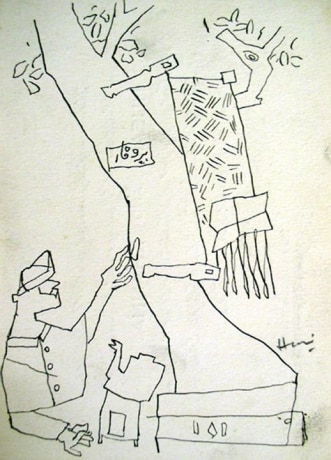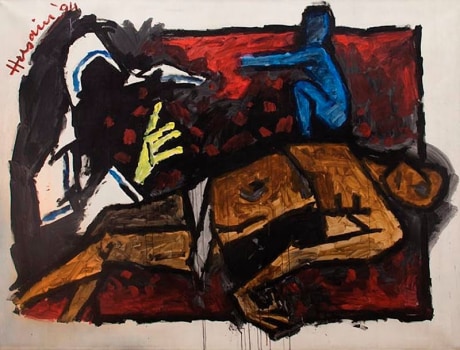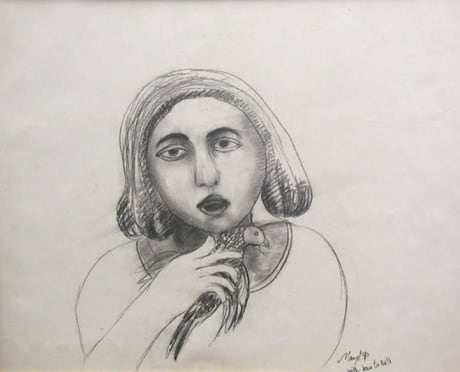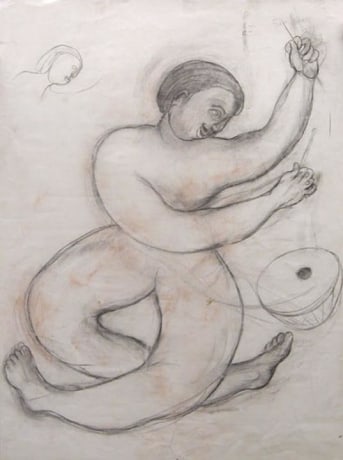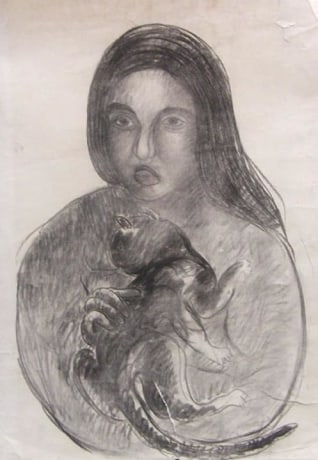
Approaching Figuration
Modern and Pre-Modern Indian Art and the Figure
Featuring Manjit Bawa, M. F. Husain, Tyeb Mehta, B. Prabha, and F. N. Souza.
March 17th – April 24th, 2015
Press Preview & Opening Reception: Tuesday, March 17th, 6:00pm – 8:00pm
35 Great Jones St., New York NY 10012
Aicon Gallery is proud to present Approaching Figuration: Modern and Pre-Modern Indian Art and the Figure, an exhibition of works by India’s Modern Masters, alongside a selection of South Asian sculptural masterpieces dating back to the 1st century. The accompanying sculptural selection begins in the ancient regions of Swat and Tamil Nadu and continues through the Gupta and Chola periods and beyond. Together, these works showcase the primacy and endurance of both mythological and everyday figurative imagery in Indian art, while bridging nearly two thousand years of artistic tradition and cultural heritage, from antiquity to Modernism.
In the years after India’s independence, M. F. Husain, F. N Souza, Tyeb Mehta and others formed the figurative-based core of the Bombay Progressive Artists Group (PAG), which grew to be the most influential group of modern artists in India. The artists at the forefront sought new forms of expression, to capture and convey India’s complex past and its emerging post-colonial culture. The fusion of Indian subject matter with post-Impressionist colors, Cubist forms and Expressionist gestures forged a synthesis between early European modernist techniques and the ever-shifting cultural and historical identities of India. The PAG further sought to break with the revivalist notions established by the Bengal School of Art, opting instead to paint with absolute freedom over content and technique, as their internationalist desires combined with the need to represent and belong to their homeland. Among the immediate inheritors of the PAG’s artistic mission, other masters like B. Prabha and Manjit Bawa carried these traditions forward over the decades with their own distinctively Indian approach to modern art.
Born in Kapadvanj, Gujarat in 1925, Tyeb Mehta, like most other artists of the PAG, could trace his influence to the European masters. His inspiration came from the macabre distortion used by artist Francis Bacon. Later, Mehta turned to Indian themes and subjects, painting images of rickshaw-wallahs and the trussed bull, before narrowing down his search for the eternal in the complex, layered images and concepts of Hindu mythology. Mehta's use of the flat planes of color to conjure space and the diagonal division of it were both devices that existed in the Indian miniature tradition and were his additions to the Baconian style of the macabre. About his own growth as an artist, Mehta said, "An artist comes to terms with certain images. He arrives at certain conventions by a process of reduction."
Regarded as the “Picasso of India,” M. F. Husain, is arguably the most recognizable figure of modern and contemporary Indian art. His narrative works, executed in a modified Cubist style, can be caustic and funny as well as serious and somber. His themes, usually treated in series, include hallmarks of Indian culture and history, such as the Ramayana, the Mahabharata, the British Empire, and motifs of Indian urban and rural life. His use of folk, tribal, religious and mythological icons, such as Mother Teresa, Gandhi, Krishna and Saraswati, are characteristic to his work, revealing his penchant for blending diverse cultural influences.
F. N. Souza’s unrestrained and graphic style creates thought-provoking and powerful images. His repertoire of subjects includes still life, landscape, nudes and icons of Christianity, boldly rendered in a frenetic distortion of form. His paintings express defiance and impatience with the convention and banality of life. A recurrent theme in his works is the conflict of a man-woman relationship, placing emphasis on sexual tension and friction. An articulate genius, he augmented his powerful and sometimes disturbing canvases with his sharp, stylish and provocative prowess.
In her many iconic canvases, B. Prabha has come to immortalized the fisherwomen of Mumbai. Her representation of these simple, rustic women with their distinctive hairstyles and bright saris is characteristic of her style. Her paintings cover a wide range of subjects, from landscapes to social issues like droughts, hunger and homelessness. In time, her need for simplicity drew her to oils. Using this medium, she developed an elegant, formal style that remains her trademark to this day.
Born in 1941, Dhuri, Punjab, India, Manjit Bawa's works are often distinguishable by their vibrant pools of color that form distinctive back-drops to his subject-matter of fantastical creatures. In his drawings and sketches, nature plays an inspiration role, with birds and animals making constant appearances, either alone or in human company. Music especially the flute is a recurring motif as well. He has painted Krishna with a flute, surrounded by dogs and not by cows as in mythological paintings. Besides these, figures of Kali and Shiva dominate Bawa's canvases; "they are the icons of my country," he feels. Bawa is also known for his love of spirituality, and particularly of Sufi philosophy. "I find a wealth of wisdom in the scriptures. Sufi philosophy has taught me that man and man, man and animals, can co-exist," he says.
Please contact Aicon Gallery (Andrew@Aicongallery.com) for more information.

